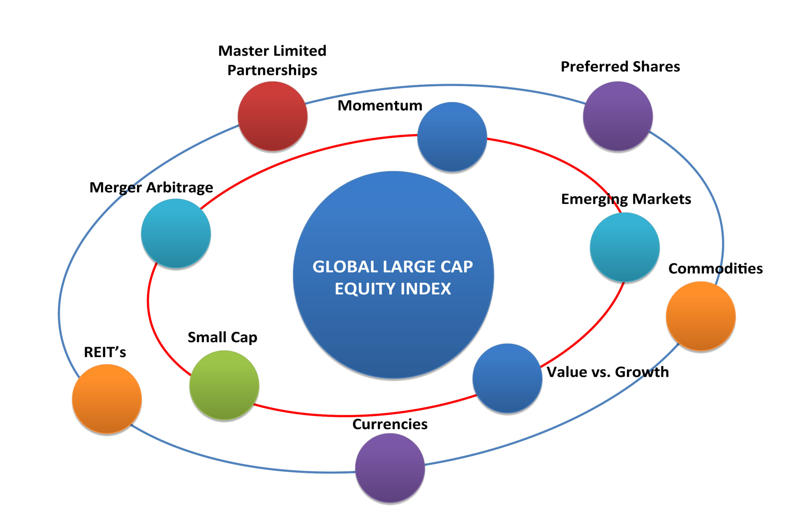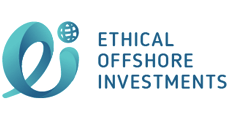Core and satellite investing explained….
There are many ways to build an investment portfolio
FundCalibre explains the Core Satellite method of portfolio construction
Juliet Schooling Latter – FundCalibre – 12 January 2023

There are many ways to build an investment portfolio. For example, you can decide to focus on just one area, such as UK equities, or cast the net wider for more global exposure.
Which is the best option will depend on your investment needs, the amount of money you can put away, and your overall attitude to risk.

Confident investors may choose to painstakingly blend together a wide variety of funds covering different asset classes, countries, and sectors. The less gung-ho, meanwhile, are more likely to buy a multi-asset portfolio instead and let the manager make all the important selection calls.
Another popular approach is known as “core and satellite”. Here we explain the concept, highlight the potential benefits, and consider the possible downsides.
What is core and satellite investing?
Let’s start with a basic definition. ‘Core and satellite’ is a portfolio construction technique that aims to help investors strike a balance between growth and risk. It involves having a stable building block at the core, to which you add some riskier but potentially more lucrative investments to the overall portfolio.

For example, core holdings can include index tracking funds that follow particular indices and generate a return in line with these markets. Alternatively, they may be funds that focus on stable, dividend paying large companies that have well established, reliable business models.
The extra so-called satellite holdings will then hopefully add some extra spice, while not being a large enough percentage of the portfolio to cause major damage should they underperform.
What are the benefits of a core and satellite investment approach?
The main benefit of this approach is providing a bedrock of investment performance with the additional benefit of (hopefully) enjoying some extra returns. It also enables investors to have some limited exposure to areas they may find of interest, just without taking too much risk when it comes to overall returns.
The core-satellite approach can embrace a variety of assets, including equities and fixed income, as well as being adjusted to suit an investor’s objectives and attitude to risk.
What are the downsides to a core and satellite investment approach?
As with any investment, there are no guarantees that the satellite positions will actually make you money. In fact, they may act as a drag on performance.
Such funds will also require more analysis, particularly if they cover sectors or industries on which there isn’t a lot of easily accessible information. This research is likely to take a lot of effort. Potential investors will need to weigh up whether they have the time and inclination required.
As with all investment funds, you’ll also need to consider the impact of fees – in terms of both core positions and satellite holdings. These charges will obviously impact the overall level of returns enjoyed.
More niche funds, for example, may come with higher charges. If the satellite fund subsequently delivers bumper returns, then the extra costs won’t be too much of a problem. However, if it fails to meet expectations, then it will have more of an adverse impact.
What type of investor is best suited to a core and satellite approach?
An investor wanting the comfort of having most of their holdings in stable investments – with a small percentage in more exciting assets – could be drawn to this approach.
Of course, what percentage of their overall investment they choose to put into the satellite positions will influence the amount of risk being taken.
The more cautious investors will probably limit the amount held in such extra funds to 5-10%. Those willing to take more risk, meanwhile, may opt to have more in satellites.
Choosing your core-satellite approach
Before you choose funds, you’ll need to decide which assets you want in the overall portfolio. For example, are you after a core of bonds of equities? Do you want passive index trackers or income producing actively managed funds?
Depending on the level of returns generated, the core-satellite mix will need to be regularly rebalanced to ensure it reflects the preferred asset allocation. It’s also worth revisiting your core-satellite approach on a regular basis to ensure it continues to deliver the risk-reward that best meets your needs.
How to choose a core holding
A core holding will generally be a fund that has a decent growth target, with a manager at the helm that has a proven ability to deliver returns. Such portfolios will often invest in stable, established companies that can usually be relied upon to deliver decent returns, irrespective of the economic backdrop.
These funds can generally be held for many years. For example, core funds may have a UK large cap mandate, which means they buy into the largest UK-listed companies.
Alternatively, they may have more of a global reach and the freedom to invest in interesting companies across the globe.
How to pick satellite holdings
Having the opportunity to buy satellite funds means investors can have a bit of fun with their portfolios and put some money into areas that are of interest.
A satellite holding can be pretty much anything. For example, investors may choose funds covering more potentially exciting areas such as the emerging markets. These portfolios will invest in companies within regions that are still developing and aren’t as closely followed as more developed markets.
This means that they have greater potential to deliver better-than-expected returns, which can translate into unexpected improvements in the stock price.
However, the downside is that returns will be more unpredictable. You’ll need to expect a fair degree of turbulence by embracing these areas.
Other examples of satellite funds could be those investing in single countries like India or China, or those investing in single industries, such as the insurance, healthcare, technology, or financial sectors.
Important information:
This article is provided for information only. The views of the author and any people quoted are their own and do not constitute financial advice. The content is not intended to be a personal recommendation to buy or sell any fund or trust, or to adopt a particular investment strategy. However, the knowledge that professional analysts have analysed a fund or trust in depth before assigning them a rating can be a valuable additional filter for anyone looking to make their own decisions. Past performance is not a reliable guide to future returns. Market and exchange-rate movements may cause the value of investments to go down as well as up. Yields will fluctuate and so income from investments is variable and not guaranteed. You may not get back the amount originally invested. Tax treatment depends of your individual circumstances and may be subject to change in the future. If you are unsure about the suitability of any investment you should seek professional advice. Whilst FundCalibre provides product information, guidance and fund research we cannot know which of these products or funds, if any, are suitable for your particular circumstances and must leave that judgement to you. Before you make any investment decision, make sure you’re comfortable and fully understand the risks.
Please note the above article was first published by Fund Calibre in January 2023 and should not be regarded as individual investment advice on whether to buy, sell or hold any of the funds or strategies mentioned. Please speak to Ethical Offshore Investors or your personal adviser BEFORE you make any investment decision based on the information contained within this article.
As we aim not to use commission paying funds, we will access the lowest charging version of the managed fund that is available on the relevant platform…… resulting in more of the investment growth staying in your pocket.
Socially Responsible Investing – Ethical Business Standards
